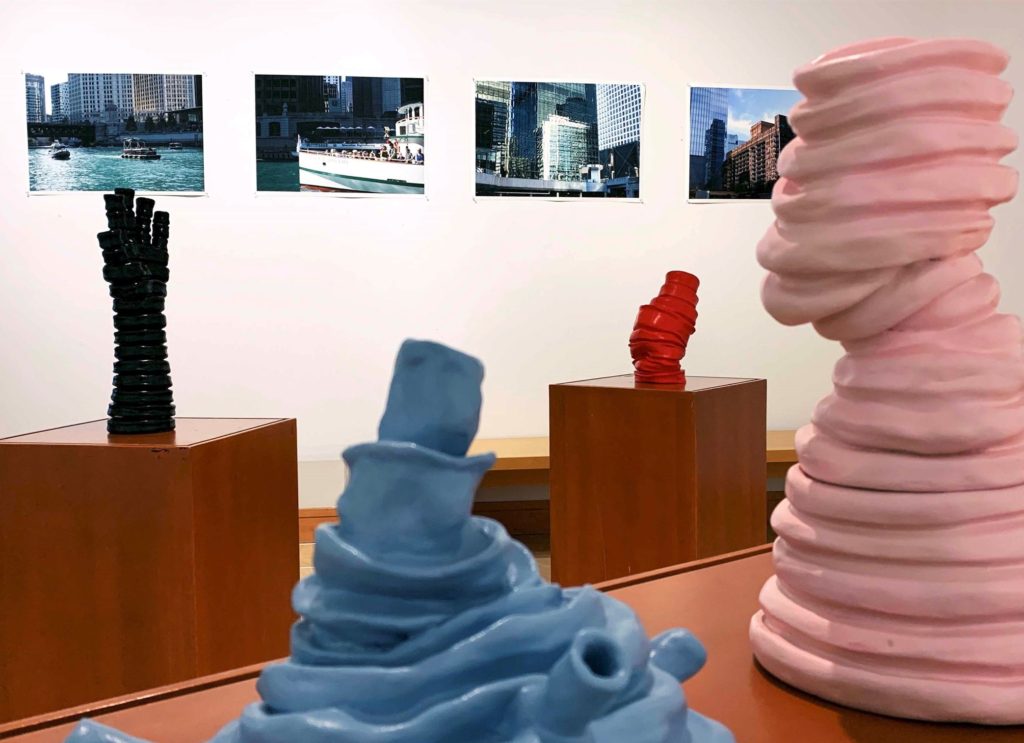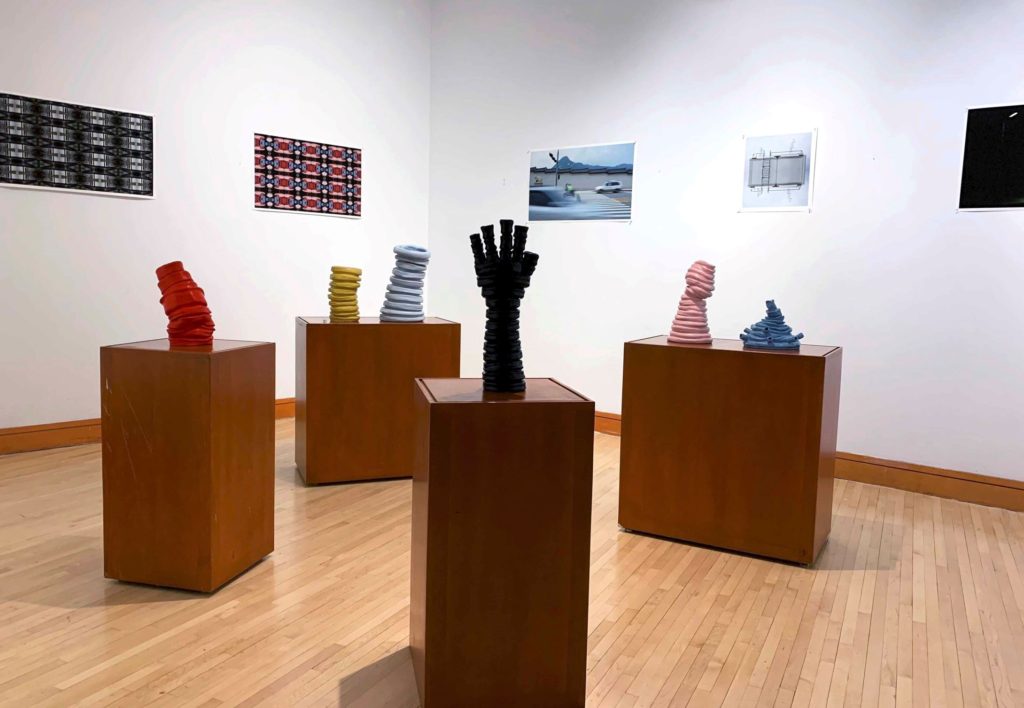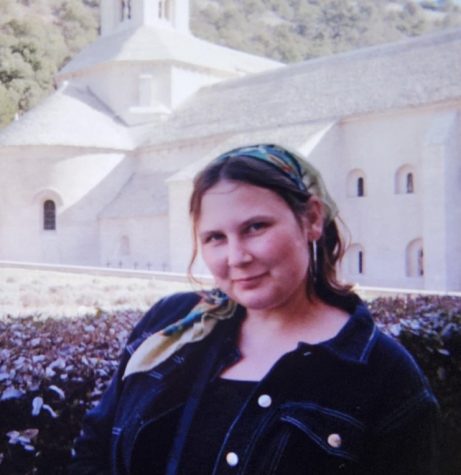Tommy Lee builds his own dynamic world
Tommy Lee’s artwork has recently developed, so some of the pieces, specifically his sculptures, were not ready in time for the exhibit’s opening. Photo by Ariel Richards.
November 17, 2021
Unlike in a traditional gallery, Tommy Lee `22 will be updating his artwork displayed in “Worldbuilding” over the course of the exhibition’s time in Smith Gallery. Lee opened his art exhibit in the Smith Gallery over the weekend of Nov. 13 and it will run until the first week of December. His artwork has recently developed, so some of the pieces, specifically his sculptures, were not ready in time for the exhibit’s opening.
“My work decided to evolve so fast, so much over the past month or two. It’s like I can’t keep up,” said Lee.
The exhibit features the sculpture and photography pieces Lee has created over the past two-and-a-half years. He will add his newest pieces to the exhibit once they are finished. The sculptures that will be showcased towards the end of the exhibit still need to be fired and glazed.
This unconventional method of updating his artwork during the exhibition instead of maintaining the same work has changed the typical order of an art exhibit. The traditional opening party will be replaced with a closing party, which Lee plans to hold during the week before finals, to celebrate the completion and showing of his artwork.
Recently, Lee has narrowed his artistic focus. “This semester has been about sculptures,” he said. As he continued to work on sculptures and refined his technique, it has taken him more time to perfect them.
“Each sculpture can take from a day to a week. I used to make things in one session, three to four hours, but now I’m taking a little more time to make each one,” said Lee.
Many of Lee’s sculptures maintain the same base structure. When he creates his subsequent sculptures, he continues the same shapes and techniques.

“I find a characteristic of what I like in that piece then I kind of carry that one onto the next one, so I don’t really know what kind of comes next. I grab onto an idea or technique that I find interesting,” he said.
Most of his sculptures are painted in bright colors because Lee thinks that they best represent life. He decided the sculpture’s color based on what he thinks will best portray its shape. “It’s nice to have lively colors because I think trying to present life in black and white or just a monotone scheme — that doesn’t reflect life,” he said. “I used to match a color based on what the shape looked like.”
In addition to making sculptures, Lee also draws and does photography, and these three forms of artwork have all evolved upon each other. “I think drawing helped me find my style, photography helped me see it in a realistic way. I see how it [sculpting] applies in a real-life situation by using real-world materials and things I photographed in real life,” he said.
Now that he has developed his drawing and sculpting skills, they both depend on each other. “I used to just rely on my intuition,” said Lee. “But now that I’ve made a lot of intuitive pieces, I want to kind of get it under my control, so sometimes I draw my pieces. Sometimes I don’t. But now I draw the way I sculpt, and I sculpt the way I draw.”
Lee’s inspiration for his artwork comes from his idea of constructing a world. His individual photos and sculptures are little creations in his large world of art.
“They are building a world, I think. Whether I’m working in photography or sculpture or drawing I’m using a lot of abstraction. And by using abstraction I make things that are little images, but also really familiar. It’s like a middle line behind familiarity and unfamiliarity,” said Lee.
Lee plans to expand his desire to turn his artwork into its own world by using virtual reality in future work. By using virtual reality, Lee will be able to construct his own online art world. “I want to incorporate new technology like VR,” he said. “I’ve been making little objects of people and little characters, but then with VR I can create an environment where they come from. So, the whole world that I create could look like these [sculptures].”



















































